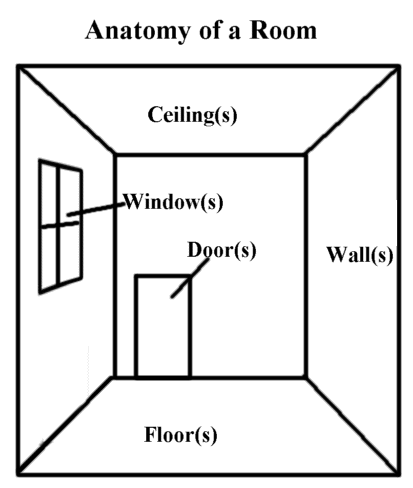What are
place prepositions?
Place prepositions , are prepositions that
are used to describe the place or position of all types of nouns. It is common
for the preposition to be placed before the noun. When we refer to Place
prepositions we usually refer to "in", "at" and
"on".
In
- Is usually used to state that someone or something is in a (the boundaries
can be physical or virtual place.
On
- Is usually used to state someone or something is on top of a surface.
At
- Is usually used to state something or someone is at a specific place.
How to use a
prepositions?
1. The prepositions usually comes before the noun.
2. Prepositions can be used with all forms of nouns (e.g. collective nouns,
pronouns etc).
3. Prepositions can't come after a verb, but can be used before a gerund or
verb in noun form.
4. The rules above do not change and there are no exceptions to the rules.
We use :
* at for a PRECISE
TIME
* in for MONTHS, YEARS, CENTURIES and LONG PERIODS
* on for DAYS and DATES
Prepositions of place are used to
clarify a specific place. Place prepositions are used with all nouns. The
preposition usually comes before the noun or the pronoun. The preposition never
comes before a verb.
Common Place Prepositions:
aboard - She is aboard the boat.
above - The picture is above the
sofa.
across - My house is across the
street.
against - The desk is against the
wall.
around - My house is around the
block.
at - Is your house at the end of the
street.
at the back of - We are going to sit
at the back of the theater.
at the bottom of - The coins are at
the bottom of the lake.
at the top of - The books are at the
top of the shelves.
between - We sit between the two
boys.
behind - The girls sit behind the
two boys.
below - The desk is below the window
by - The books are by the door.
in - I live in the big green and
white house.
inside - I live inside the big green
house.
on the corner of - We live on the
corner of 3rd avenue
in the middle of - We live in the
middle of the street.
near - I don't live near the
supermarket.
next to - I live next to my best
friend.
to the left of - The blue box is to
the left of the green box.
to the right of - The orange box is
to the right of the yellow box.
on - The sun heater is on the top of
the building.
on the side of - There is a big sign
on the side of the house.
on top of - There is a man on the
top of the roof.
on the other side of - Do you see
what is going on over there on the other side of the roof?
opposite - The post office is on the
opposite side of the street.
outside - The car is outside the
garage.
under - The blanket is under the bed
in a box..
underneath - The pen is underneath
the box.
Time prepositions are used to define
time. Prepositions usually come before a noun or pronoun. Prepositions never
come after a verb.
*
after - I will be there after work.
* around - We will be there around 3 PM
* before - I will be there before I go to school.
* between - I will be there
* by - I will be there by the time that you leave for work.
* during - I will be there during your class.
* for - I will be there for your birthday.
* past - I wasn't there for the past 2 months.
* since - I didn't see her since I was 10 years old.
* until - I will not be home until 7:00 PM.
* within - I will be there within 2 hours.
IN
Use
'in' with spaces:
* in a room / in a building
* in a garden / in a park
Use 'in' with bodies of water:
* in the water
* in the sea
* in a river
Use 'in' with lines:
* in a row / in a line
* in a queue
AT
Use 'at' with places:
* at the bus-stop
* at the door
* at the cinema
* at the end of the street
Use 'at' with places on a page:
* at the top of the page
* at the bottom of the page
Use 'at' in groups of people:
* at the back of the class
* at the front of the class
ON
Use 'on' with surfaces:
* on the ceiling / on the wall / on the floor
* on the table
Use 'on' with small islands:
* I stayed on Maui.
Use 'on' with directions:
* on the left
* on the right
* straight on
IMPORTANT NOTES
In / at / on the corner
We say 'in the corner of a room', but 'at the corner (or 'on the corner') of a
street'
In / at / on the front
* We say 'in the front / in the back' of a car
* We say 'at the front / at the back' of buildings / groups of people
* We say 'on the front / on the back' of a piece of paper







